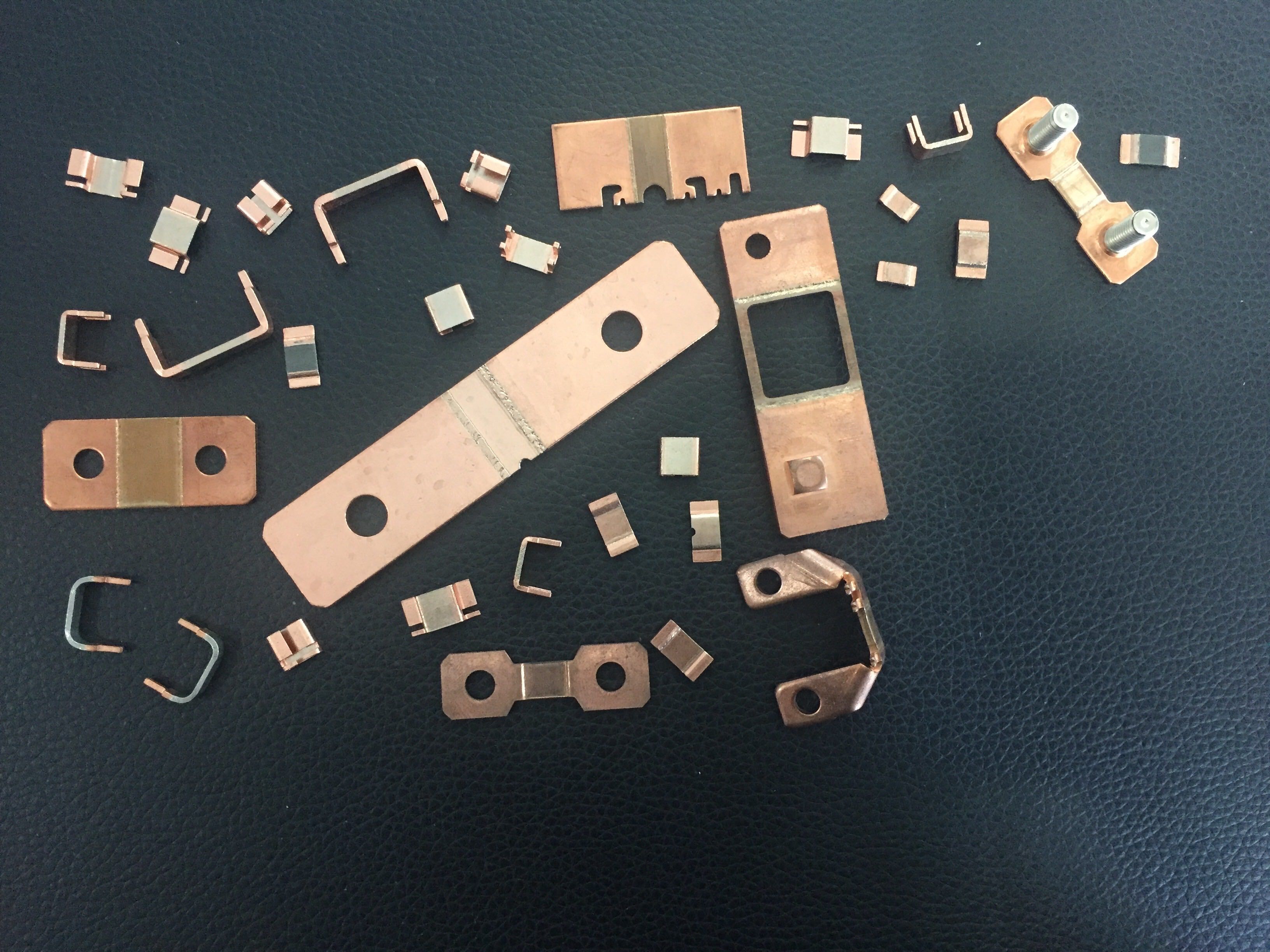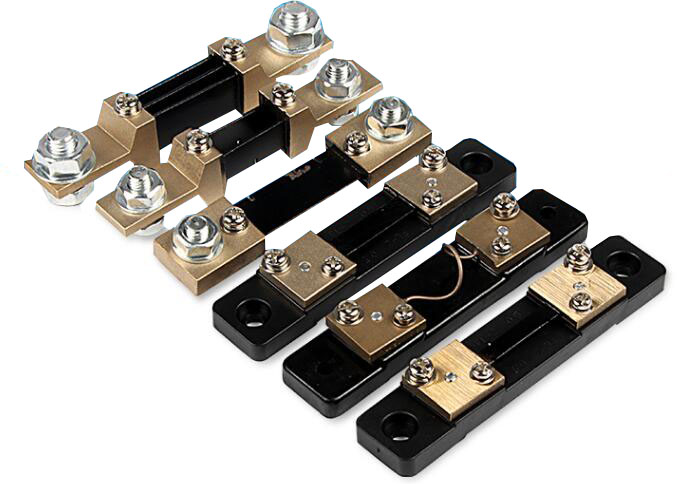Position:Home » Technical Articles
Shunt Resistor for Current Measuring in Ammeters
Writer:Microhm Page View:Date:2019-08-14
A device to measure electric current is called an ammeter. Most modern ammeters measure the voltage drop over a precision resistor with a known resistance. The current flow is calculated by using Ohm’s law: Ohm's Law I=V/R. Most ammeters have an inbuilt resistor to measure the current. However, when the current is too high for the ammeter, a different setup is required. The solution is to place the ammeter in parallel with an accurate shunt resistor. Another term that is sometimes used for this type of resistor is ammeter shunt. Microhm Electronics manufactures broad range of shunt resistors, like MMS series, FL-2 series for ammeter, BMS and other applications.

Usually this is a high precision manganin resistor with a low resistance value. The current is divided over the shunt and the ammeter, such that only a small (known) percentage flows through the ammeter. In this way, large currents can still be measured. By correctly scaling the ammeter, the actual amperage can be directly measured. Using this configuration, in theory the maximum amperage that can be measured is endless. However, the voltage rating of the measurement device must not be exceeded. This means that the maximum current multiplied by the resistance value, cannot be higher than the voltage rating. Also, the resistance value should be as low as possible to limit the interference with the circuit. On the contrary, the resolution gets smaller the smaller the resistance and thus the voltage drop is.

It is important to carefully choose the position of the shunt in the circuit. When the circuit shares a common ground with the measurement device, often is chosen to place the shunt as close to the ground as possible. The reason is to protect the ammeter from the common mode voltage that might be too high and damage the device or give erroneous results. A disadvantage from this set up is that leakages that bypass the shunt might not be detected. In case the shunt is placed in the ungrounded leg, it must be isolated from the ground or include a voltage divider or an isolation amplifier to protect the instrument. Other ways are possible to not connect the measurement instrument directly with the high voltage circuit, such as using the Hall Effect. However, current shunts are commonly more affordable and cheaper. Microhm Electronics' shunt resistors, MMS5515, FL-2 100 A to 7500A are all ready for your options.

Usually this is a high precision manganin resistor with a low resistance value. The current is divided over the shunt and the ammeter, such that only a small (known) percentage flows through the ammeter. In this way, large currents can still be measured. By correctly scaling the ammeter, the actual amperage can be directly measured. Using this configuration, in theory the maximum amperage that can be measured is endless. However, the voltage rating of the measurement device must not be exceeded. This means that the maximum current multiplied by the resistance value, cannot be higher than the voltage rating. Also, the resistance value should be as low as possible to limit the interference with the circuit. On the contrary, the resolution gets smaller the smaller the resistance and thus the voltage drop is.

It is important to carefully choose the position of the shunt in the circuit. When the circuit shares a common ground with the measurement device, often is chosen to place the shunt as close to the ground as possible. The reason is to protect the ammeter from the common mode voltage that might be too high and damage the device or give erroneous results. A disadvantage from this set up is that leakages that bypass the shunt might not be detected. In case the shunt is placed in the ungrounded leg, it must be isolated from the ground or include a voltage divider or an isolation amplifier to protect the instrument. Other ways are possible to not connect the measurement instrument directly with the high voltage circuit, such as using the Hall Effect. However, current shunts are commonly more affordable and cheaper. Microhm Electronics' shunt resistors, MMS5515, FL-2 100 A to 7500A are all ready for your options.
Keywords:Shunt Resist
Latest News
- Resistor's role in measuring and correcting LED,,,
- Single through-hole resistors' characteristics ,,,
- Why shunt resistors for current sense applicati,,,
- Metal-film resistors with small size, high resi,,,
- 36W High-Current Shunt Resistors MMS8420,,,
- 1W Surface Mount Resistor MPR1206,,,
- An Overview of Microhm Electronics' Resistor Pr,,,
- More anti-sulfur resistors used in harsh envir,,,
- Resistance changes with temperature,,,
- 140W TO247 High Power Heatsinkable Resistor,,,
- MMS5930 is ideal for current sensing in industr,,,
- Shunt resistors selection for engineers' design,,,
- Considerations for choosing precision resistors,,,
- Ceramic Encased Cement Resistors NWH Series for,,,
- Resistors for Passive Balancing in Battery-Pow,,,
Hot Articles
- Microhm will take part in 10th Automotive World,,,
- Thanks for Visiting Microhm's Booth E5-5706 in ,,,
- Resistors in Short Supply: Blame Cars,,,
- New lunch: High Power Precision Shunt Resistor,,,,
- How to Test a Resistor,,,
- Innovative Technology, Future Electric: Electri,,,
- What is Precision Resistors?,,,
- SMD Resistors Sizes and Packages,,,
- The Construction and Features of Metal Film Res,,,
- What is a TO-220 Resisor?,,,
- Hot Selling Products: Precision Shunt Resistors,,,
- How to Calculate the Equivalent Resistance Valu,,,
- What is a Fixed Resistor?,,,
- Resistors in LED Circuits,,,
- Resistors Types and Materials Overview,,,
Resistance applications
- Miniature future for passive electronic compone,,,
- Why Zero-Ohm Resistors?,,,
- Industrial Roberts Applied to Solar Photovoltai,,,
- BMS for New Energy Vehicle,,,
- Difference Between High Precision Resistors and,,,
- Precision Resistors' Construction and TCR,,,
- The Main Application for High Precision and Low,,,
- Surface Mount Resistor's Size and Package ,,,
- Carbon Film Resistors' Features and Application,,,
- Shunt Resistor MMS8420 for High Current Stable ,,,
- The Four Important Functions of Alloy Resistors,,,
- Heater Blower Motor Resistor in Air Conditioner,,,
- Select the Right Resistor for Harmonic Filterin,,,
- Urbanization Development Bringing the Transform,,,
- The Measurement Accuracy of Automotive Shunt is,,,
